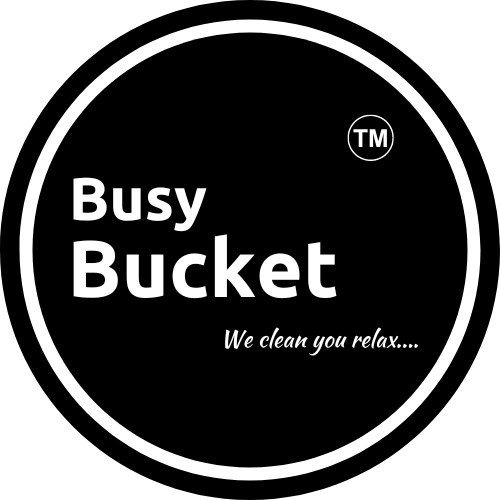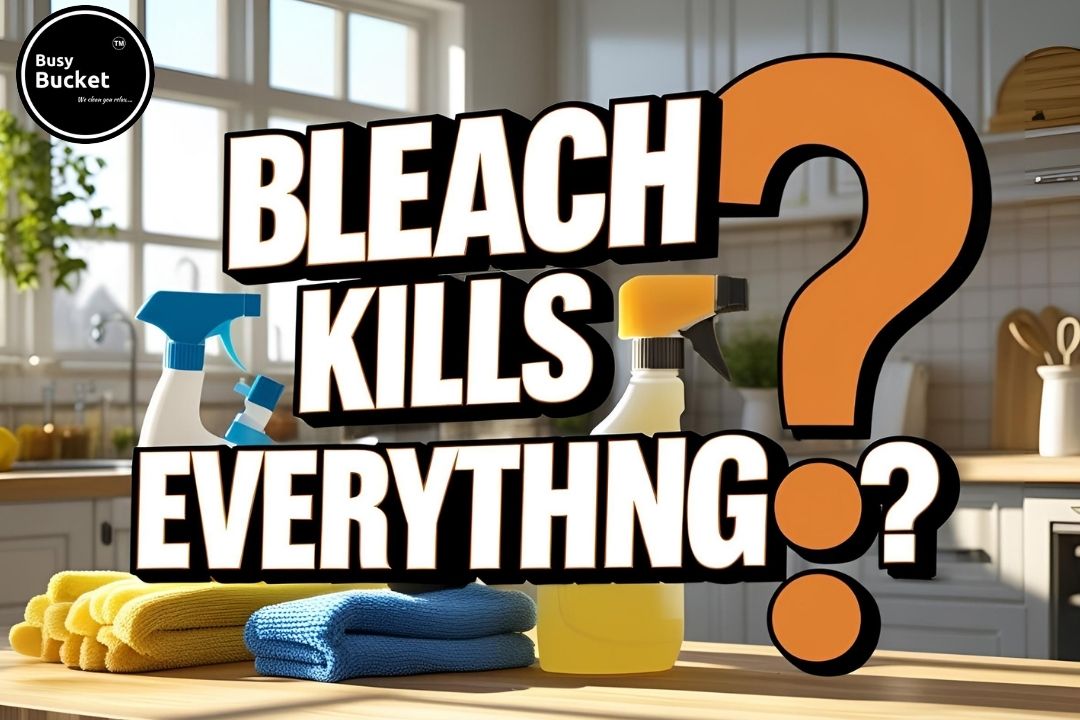But here is what many years of hands-on cleaning experience have taught us: bleach is not the all-purpose miracle worker it has made out to be. In fact, thinking it can fix every mess might be doing more harm than good.
If you are cleaning your bedroom, your kitchen, your little home salon, or even the garage where your tools live, it is time to talk about what bleach really does and what it does not. Before you grab that bottle again, let us clear up some common cleaning myths that we have seen confuse even the most well-meaning home cleaners.
Here are 7 Wrong Cleaning Myths You Have Probably Believed:
1. Myth: Bleach Kills Everything and Cleans Everything
This is one of the most common cleaning myths people fall for. Bleach has a strong smell and gives the impression that it is wiping out every mess and microbe in sight. After years of working in homes, salons, kitchens, and offices, we have seen just how often this myth causes confusion. The truth is, bleach is a powerful disinfectant but it does not clean.
Here is the real difference:
- Disinfecting kills germs like bacteria, viruses, and fungi
- Bleach only works well after a surface is already clean
- If the surface is dirty, bleach will not reach the germs hiding underneath
Most people spray bleach directly on messy counters or bathroom tiles, thinking it is enough. But if there is any grease or grime, the germs stay protected. To clean smarter, always wipe down with soap and water first. Once the surface is free from visible dirt, only then should bleach be used for disinfecting. Also Don’t Use That Cleaner Until You Read This Busy Bucket Report
2. Myth: You Can Clean Everything with Bleach
Bleach feels like a quick fix for just about every mess. It smells strong, looks effective, and is often treated like a one-solution-for-all product. But after working with so many surfaces in homes, salons, and shops, we have seen how bleach can do more harm than good when used in the wrong place.
Here are some materials you should never clean with bleach:
- Wood – Bleach can strip away natural oils and damage the finish
- Metal surfaces – It causes corrosion, especially on stainless steel and aluminium
- Stone countertops – On granite or marble, it can etch the surface and leave permanent marks
- Flooring – Frequent mopping with bleach wears down the finish over time
3. Myth: Bleach Is the Only Powerful Cleaner Out There
A lot of people stick with bleach simply because they think nothing else works as well. But in our experience, especially in homes with kids or pets, we have found several safer alternatives that clean just as effectively without the harsh fumes or side effects.
Some bleach alternatives to try:
- White vinegar – Great for cutting through grease and neutralizing smells
- Baking soda – A gentle scrubbing agent and odor remover that works well with vinegar or water
- Castile soap – Plant-based, mild on surfaces, but surprisingly effective
4. Myth: Mixing Bleach with Other Cleaners Makes It Stronger
This is not just a myth — it is a serious safety risk. We have come across too many cases where someone unknowingly mixed cleaning products hoping for extra power, only to end up coughing, dizzy, or worse. The idea that combining bleach with other cleaners makes it work better is simply not true.
The most dangerous combos:
- Bleach + Ammonia = Chloramine gas
- Bleach + Vinegar = Chlorine gas
- Bleach + Alcohol = Chloroform (yes, the kind used in crime shows)
Even small amounts of these gases in an enclosed space like a bathroom or kitchen can be enough to make someone feel sick. And most people do not realize what is happening until the symptoms hit.so always use prefer natural cleaning solution for your home.
To stay safe, stick to one cleaner at a time. Always read the product labels before using anything new.
5. Myth: All Bleach Is the Same
Most people think bleach is just bleach. One bottle fit all, right? But when we work with clients in homes, salons, and commercial spaces, we often find they are using the wrong type of bleach for the job.
There is more than one kind, and each one works differently depending on what you are cleaning.
Here are the most common types of bleach:
- Chlorine bleach – This is the classic liquid bleach, good for disinfecting and whitening
- Oxygen bleach – A non-chlorine option that is gentler, color-safe, and better for fabrics
- Powdered bleach – Found in many laundry products and needs water to activate.
Understanding which bleach to use for which task makes a big difference. It can help you avoid damage, save your belongings, and make your cleaning more effective overall.
6. Myth: Bleach Is Safe as Long as You Wear Gloves
Wearing gloves is important, but it is not enough when you are dealing with bleach. Many people think gloves make bleach completely safe to use, but we have seen firsthand how bleach can still affect your health in ways that gloves cannot protect you from. What most people do not realize is that every time you use bleach, it releases chlorine gas into the air.
Good ventilation makes all the difference. Always open windows or doors, use a fan if possible, and avoid staying in a closed room when using bleach.
7. Myth: Bleach Does not Affect Health Unless You Drink It
A lot of people assume bleach only becomes dangerous if it is swallowed. But based on everything we have learned working with regular users from home cleaners to salon staff and shopkeepers this is one of the most harmful misconceptions.
A study published in 2020 by Occupational and Environmental Medicine showed that people who use bleach or disinfectants often had a higher risk of developing asthma and other breathing problems. This is especially true for those working in small, closed rooms without good airflow.
Busy Bucket: The Myth Buster
At Busy Bucket, we do not just clean we clear up the confusion. With years of hands-on experience, we have seen all the cleaning myths out there, especially around bleach and harsh chemicals. That is why we focus on methods that work and are safe for your home, your family, and your surfaces.
From deep cleaning to routine care, our team uses the right products and techniques based on what truly delivers results. If you are tired of guesswork and gimmicks, leave the myths behind and trust Busy Bucket to clean smarter, not harder.
Conclusion: Bleach Is not Bad—But It is Not a Miracle
Bleach does have its role in cleaning. But treating it like a one-solution-for-everything product leads to more problems than people realize. Over the years, we have seen how bleach has damaged clothes, ruined surfaces, and even affected people’s health just because they did not know the risks.
Whether you are someone who likes to keep their home spotless, a shopkeeper trying to stay hygienic, a salon owner focused on cleanliness, or just someone cleaning up their tools and workbench. It is always better to clean smart, not just hard.
FAQs For Cleaning Myths
Can bleach clean and disinfect at the same time?
No, bleach disinfects but does not clean dirt or grease. Always clean with soap and water first, then disinfect if needed.
Is it safe to mix bleach with other cleaners?
Not at all. Mixing bleach with vinegar, ammonia, or alcohol can release toxic gases. Always use bleach alone and with care.
What are safer alternatives to bleach for everyday cleaning?
Hydrogen peroxide, white vinegar, baking soda, and castile soap are great bleach-free options for regular cleaning.


